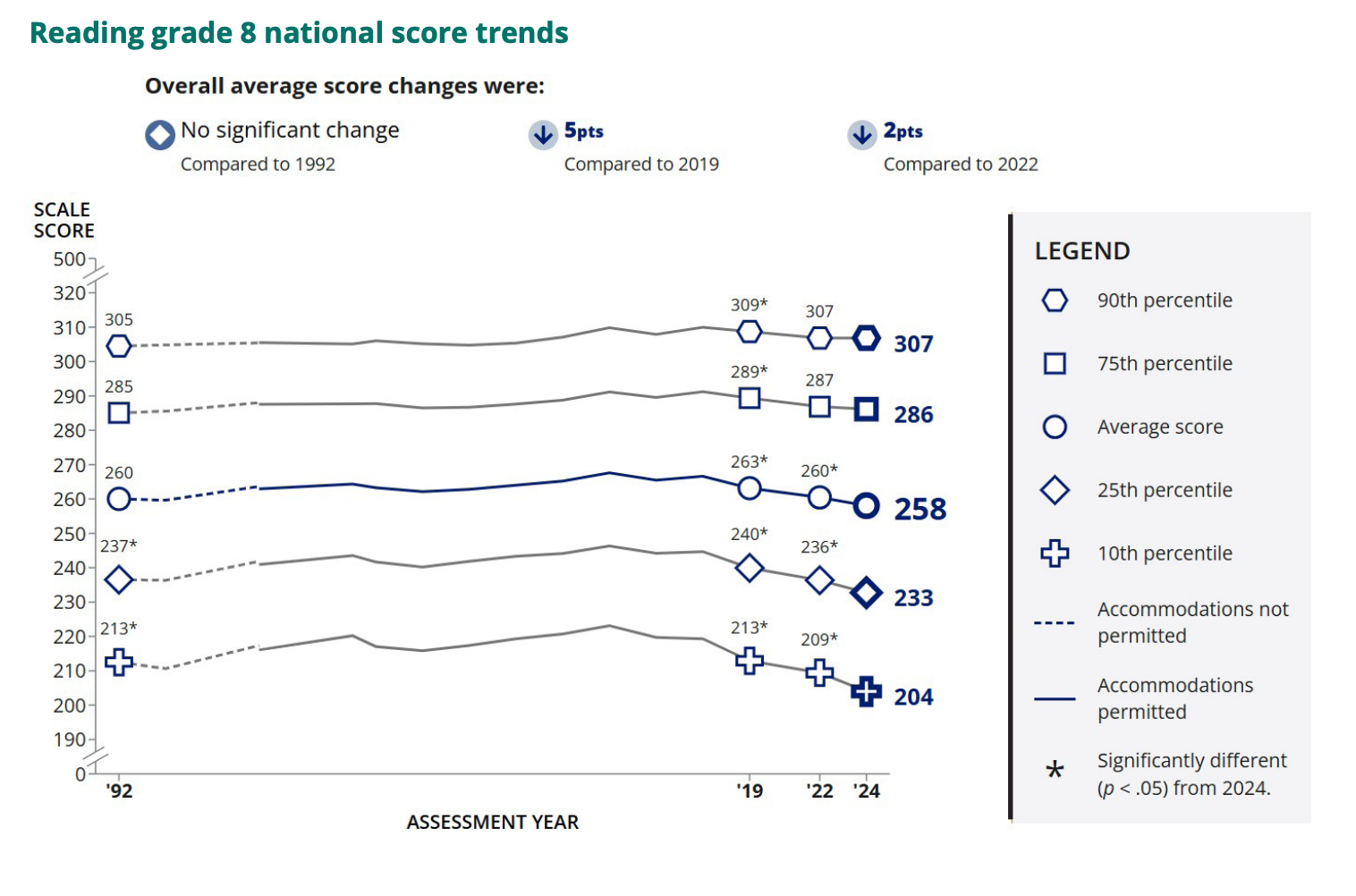As a sector, we should really have a handle on how many students we have and what they are like.
Data Futures – the multi-year programme that was designed to modernise the collection of student data – has become, among higher education data professionals, a byword for delays, stress, and mixed messages.
It was designed to deliver in year data (so 2024-25 data arriving within the 2024-25 academic year) three times a year, drive efficiency in data collection (by allowing for process streamlining and automation), and remove “data duplication” (becoming a single collection that could be used for multiple purposes by statutory customers and others). To date it has achieved none of these benefits, and has instead (for 2022-23 data) driven one of the sectors’ most fundamental pieces of data infrastructure into such chaos that all forward uses of data require heavy caveats.
The problem with the future
In short – after seven years of work (at the point the review was first mooted), and substantial investment, we are left with more problems than we started with. Most commentary has focused on four key difficulties:
- The development of the data collection platform, starting with Civica in 2016 and later taken over by Jisc, has been fraught with difficulties, frequently delayed, and experienced numerous changes in scope
- The documentation and user experience of the data collection platform has been lacking. Rapid changes have not resulted in updates for those who use the platform within providers, or those who support those providers (the HESA Liaison team). The error handling and automated quality rules have caused particular issues – indeed the current iteration of the platform still struggles with fields that require responses involving decimal fractions.
- The behavior of some statutory customers – in frequently modifying requirements, changing deadlines, and putting unhelpful regulatory pressure on providers, has not helped matters.
- The preparedness of the sector has been inconsistent between providers and between software vendors. This level of preparedness has not been fully understood – in part because of a nervousness among providers around regulatory consequences for late submissions.
These four interlinked strands have been exacerbated by an underlying fifth issue:
- The quality of programme management, programme delivery, and programme documentation has not been of the standards required for a major infrastructure project. Parts of this have been due to problems in staffing, and problems in programme governance – but there are also reasonable questions to be asked about the underlying programme management process.
Decisions to be made
An independent review was originally announced in November 2023, overlapping a parallel internal Jisc investigation. The results we have may not be timely – the review didn’t even appear to start until early 2024 – but even the final report merely represents a starting point for some of the fundamental discussions that need to happen about sector data.
I say a “starting point” because many of the issues raised by the review concern decisions about the projected benefits of doing data futures. As none of the original benefits of the programme have been realised in any meaningful way, the future of the programme (if it has one) needs to be focused on what people actually want to see happen.
The headline is in-year data collection. To the external observer, it is embarrassing that while other parts of the education sector can return data on a near-real time basis – universities update the records they hold on students on a regular basis so it should not be impossible to update external data too. It should not come as a surprise that when the review poses the question:
As a priority, following completion of the 2023-24 data collection, the Statutory Customers (with the help of Jisc) should revisit the initial statement of benefits… in order to ascertain whether a move to in-year data collection is a critical dependent in order to deliver on the benefits of the data futures programme.
This isn’t just an opportunity for regulators to consider their shopping list – a decision to continue needs to be swiftly followed by a cost-benefit analysis, reassessing the value of in-year collection and determining whether or when to pursue in-year collection. And the decision is that there will, one day, be in-year student data. In a joint statement the four statutory customers said:
After careful consideration, we intend to take forward the collection of in-year student data
highlighting the need for data to contribute to “robust and timely regulation”, and reminding institutions that they will need “adequate systems in place to record and submit student data on time”.
The bit that interests me here is the implications for programme management.
Managing successful programmes
If you look at the government’s recent record in delivering large and complex programmes you may be surprised to learn of the existence of a Government Functional Standard covering portfolio, programme, and project management. What’s a programme? Well:
A programme is a unique, temporary, flexible organisation created to co-ordinate, direct and oversee the implementation of a set of projects and other related work components to deliver outcomes and benefits related to a set of strategic objectives
Language like this, and the concepts underpinning it come from what remains the gold standard programme management methodology, Managing Successful Programmes (MSP). If you are more familiar with the world of project management (project: “a unique temporary management environment, undertaken in stages, created for the purpose of delivering one or more business products or outcomes”) it bears a familial resemblance to PRINCE2.
If you do manage projects for a living, you might be wondering where I have been for the last decade or so. The cool kids these days are into a suite of methodologies that come under the general description of “agile” – PRINCE2 these days is seen primarily as a cautionary tale: a “waterfall” (top down, documentation centered, deadline focused) management practice rather than an “iterative” (emergent, development centered, short term) one.
Each approach has strengths and weaknesses. Waterfall methods are great if you want to develop something that meets a clearly defined need against clear milestones and a well understood specification. Agile methods are a nice way to avoid writing reports and updating documentation.
Data futures as a case study
In the real world, the distinction is less clear cut. Most large programmes in the public sector use elements of waterfall methods (regular project reports, milestones, risk and benefits management, senior responsible owners, formal governance) as a scaffold in which sit agile elements at a more junior level (short development cycle, regular “releases” of “product” prioritised above documentation). While this can be done well it is very easy for the two ideologically separate approaches to drift apart – and it doesn’t take much to read this into what the independent review of data futures reveals.
Recommendation B1 calls, essentially, for clarity:
- Clarity of roles and responsibilities
- Clarity of purpose for the programme
- Clarity on the timetable, and on how and when the scope of the programme can be changed
This is amplified by recommendation C1, which looks for specific clarifications around “benefits realisation” – which itself underpins the central recommendation relating to in-year data.
In classic programme management (like MSP) the business case will include a map of programme benefits: that is, all of the good things that will come about as a result of the hard work of the programme. Like the business case’s risk register (a list of all the bad things that might happen and what can be done if they did) it is supposed to be regularly updated and signed off by the Programme Board – which is made up of the most senior staff responsible for the work of the programme (the Senior Responsible Owners) in the lingo.
The statement of benefits languished for some time without a full update (there was an incomplete attempt in February 2023, and a promise to make another one after the completed 2022-23 collection – we are not told whether the second had happened). In proper, grown-up, programme management this is supposed to be done in a systematic way: every programme board meeting you review the benefits and the risk register. It’s dull (most of the time!) but it is important. The board needs an eye on whether the programme still offers value overall (based on an analysis of projected benefits). And if the scope needed to change, the board would have final say on that.
The issue with Data Futures was clarity over whether this level of governance actually had the power to do these things, and – if not – who was actually doing them. The Office for Students latterly put together quite a complex and unwieldy governance structure, with a quarterly review board having oversight of the main programme board. This QRB was made up of very senior staff at the statutory customers (OfS, HEFCW, SFC, DoE(NI)), Jisc, and HESA (plus one Margaret Monckton – now chair of this independent review! – as an external voice).
The QRB oversaw the work of the programme board – meaning that decisions made by the senior staff nominally responsible for the direction of the programme were often second guessed by their direct line managers. The programme board was supposed to have its own assurance function and an independent observer – it did not (despite the budget being there for it).
Stop and go
Another role of the board is to make what are more generally called “stop-go” decisions, and are here described as “approval to proceed”. This is an important way of making sure the programme is still on track – you’d set (in advance) the criteria that needed to be fulfilled in terms of delivery (was the platform ready, had the testing been done) before you moved on to the next work package. Below this, incremental approvals are made by line managers or senior staff as required, but reported upwards to the board.
What seems to have happened a lot in the Data Futures programme is what’s called conditional approvals – where some of these conditions were waived based on assurances that the remaining required work was completed. This is fine as it goes (not everything lines up all the time) but as the report notes:
While the conditions of the approvals were tracked in subsequent increment approval documents, they were not given a deadline, assignee or accountable owner for the conditions. Furthermore, there were cases where conditions were not met by the time of the subsequent approval
Why would you do that? Well, you’d be tempted if you had another board above you – comprising very senior staff and key statutory customers – concerned about the very public problems with Data Futures and looking for progress. The Quarterly Review Board (QRB) as it turned out, only actually ended up making five decisions (and in three of these cases it just punted the issue back down to the programme board – the other two, for completists, were to delay plans for in-year collection).
What it was meant to be doing was “providing assurance on progress”, “acting as an escalation point” and “approving external assurance activities”. As we’ve already seen, it didn’t really bother with external assurance. And on the other points the review is damning:
From the minutes provided, the extent to which the members of the QRG actively challenged the programme’s progress and performance in the forum appears to be limited. There was not a clear delegation of responsibilities between the QRG, Programme Board and other stakeholders. In practice, there was a lack of clarity also on the role of the Data Futures governance structure and the role of the Statutory Customers separately to the Data Futures governance structure; some decisions around the data specification were taken outside of the governance structure.
Little wonder that the section concludes:
Overall, the Programme Board and QRG were unable to gain an independent, unbiased view on the progress and success of the project. If independent project assurance had been in place throughout the Data Futures project, this would have supported members of the Programme Board in oversight of progress and issues may have been raised and resolved sooner
Resourcing issues
Jisc, as developer, took on responsibility for technical delivery in late 2019. Incredibly, Jisc was not provided with funding to do this work until March 2020.
As luck would have it, March 2020 saw the onset of a series of lockdowns and a huge upswing in demand for the kind of technical and data skills needed to deliver a programme like data futures. Jisc struggled to fill key posts, most notably running for a substantive period of time without a testing lead in post.
If you think back to the 2022-23 collection, the accepted explanation around the sector for what – at heart – had gone wrong was a failure to test “edge cases”. Students, it turns out, are complex and unpredictable things – with combinations of characteristics and registrations that you might not expect to find. A properly managed programme of testing would have focused on these edge cases – there would have been less issues faced when the collection went live.
Underresourcing and understaffing are problems in their own right, but these were exacerbated by rapidly changing data model requirements, largely coming from statutory customers.
To quote the detail from from the report:
The expected model for data collection under the Data Futures Programme has changed repeatedly and extensively, with ongoing changes over several years on the detail of the data model as well as the nature of collection and the planned number of in-year collections. Prior to 2020, these changes were driven by challenges with the initial implementation. The initial data model developed was changed substantially due to technical challenges after a number of institutions had expended significant time and resource working to develop and implement it. Since 2020, these changes were made to reflect evolving requirements of the return from Statutory Customers, ongoing enhancements to the data model and data specification and significantly, the ongoing development of quality rules and necessary technical changes determined as a result of bugs identified after the return had ‘gone live’. These changes have caused substantial challenges to delivery of the Data Futures Programme – specifically reducing sector confidence and engagement as well as resulting in a compressed timeline for software development.
Sector readiness
It’s not enough to conjure up a new data specification and platform – it is hugely important to be sure that your key people (“operational contacts”) within the universities and colleges that would be submitting data are ready.
On a high level, this did happen – there were numerous surveys of provider readiness, and the programme also worked with the small number of software vendors that supply student information systems to the sector. This formal programme communication came alongside the more established links between the sector and the HESA Liaison team.
However, such was the level of mistrust between universities and the Office for Students (who could technically have found struggling providers in breach of condition of registration F4), that it is widely understood that answers to these surveys were less than honest. As the report says:
Institutions did not feel like they could answer the surveys honestly, especially in instances where the institution was not on track to submit data in line with the reporting requirements, due to the outputs of the surveys being accessible to regulators/funders and concerns about additional regulatory burden as a result.
The decision to scrap a planned mandatory trial of the platform, made in March 2022 by the Quarterly Review Group, was ostensibly made to reduce burden – but, coupled with the unreliable survey responses, this meant that HESA was unable to identify cases where support was needed.
This is precisely the kind of risk that should have been escalated to programme board level – a lack of transparency between Jisc and the board about readiness made it harder to take strategic actions on the basis of evidence about where the sector really was. And the issue continued into live collection – because Liaison were not made aware of common problems (“known issues”, in fact) the team often struggled with out-of-date documentation: meaning that providers got conflicting messages from different parts of Jisc.
Liaison, on their part, dealt with more than 39,000 messages between October and December 2023 (during the peak of issues raised during the collection process) – even given the problems noted above they resolved 61 per cent of queries on the first try. Given the level of stress in the sector (queries came in at all hours of the day) and the longstanding and special relationship that data professionals have with HESA Liasion, you could hardly criticise that team for making the best of a near-impossible situation.
I am glad to see that the review notes:
The need for additional staff, late working hours, and the pressure of user acceptance testing highlights the hidden costs and stress associated with the programme, both at institutions and at Jisc. Several institutions talked about teams not being able to take holidays over the summer period due to the volume of work to be delivered. Many of the institutions we spoke to indicated that members of their team had chosen to move into other roles at the institution, leave the sector altogether, experienced long term sickness absence or retired early as a result of their experiences, and whilst difficult to quantify, this will have a long-term impact on the sector’s capabilities in this complex and fairly niche area.
Anyone who was even tangentially involved in the 2022-23 collection, or attended the “Data Futures Redux” session at the Festival of Higher Education last year, will find those words familiar.
Moving forward
The decision on in-year data has been made – it will not happen before the 2026-27 academic year, but it will happen. The programme delivery and governance will need to improve, and there are numerous detailed recommendations to that end: we should expect more detail and the timeline to follow.
It does look as though there will be more changes to the data model to come – though the recommendation is that this should be frozen 18 months before the start of data collection which by my reckoning would mean a confirmed data model printed out and on the walls of SROC members in the spring of 2026. A subset of institutions would make an early in-year submission, which may not be published to “allow for lower than ideal data quality”.
On arrangements for collections for 2024-25 and 2025-26 there are no firm recommendations – it is hoped that data model changes will be minimal and the time used to ensure that the sector and Jisc are genuinely ready for the advent of the data future.












